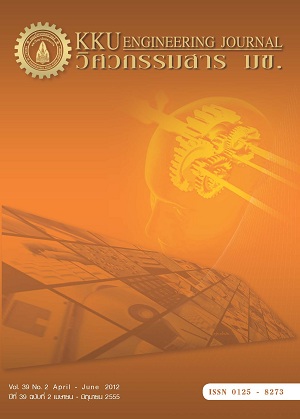Computer programming for assembly line balancing case study : apparel factory in Ubon Ratchathani
Main Article Content
Abstract
The aim of this research was to develop computer programming for assembly line balancing in apparel factory in Ubon Ratchathani province. The case study was T-shirt style 53287. The efficiency of production line was 55.48%, it was quite very low due to no computer programming for line balancing and the factory balanced line with the traditional method. Then, we have developed a computer programming in order to improve the balance of theassembly line. The heuristic method was applied using the rules of Maximum Task Time, Minimum Task Time, Ranked Positional Weight, and Greedy Randomized to determine the optimal solutions related to the number of stations and line efficiency. From the result, it was found that three heuristic rules given the best and the samesolutions which were produced by the use of Maximum Task Time, Ranked Positional Weight and Greedy Randomized respectively. The minimum number of stations were reduced from 17 stations to 12 stations and theline efficiency was increased from 55.48 percent to 78.60 percent. The developed computer programming canbalance the assembly line faster and more efficient.
Keywords: Computer programming, Assembly line balancing, Heuristic method, Apparel factory
Article Details
This work is licensed under a Creative Commons Attribution-NonCommercial-NoDerivatives 4.0 International License.



